Ripe and juicy strawberries are one of nature’s sweetest treats. They’re also one of the easiest and most versatile additions to a garden, providing flowers in spring, fruit in spring and summer, and ornamental green leaves for most of the year — what could be better?
You can take the traditional approach of building long rows or hills, but in most home gardens, strawberries function well as ground covers or a border’s edge. If you don’t have great soil, try a raised bed; they'll thrive and will be even easier to harvest. If your space is limited, know that all but musk strawberries are happy in containers, from standard pots to strawberry jars to hanging planters. Just don’t plant where you’ve recently grown eggplants, peppers, potatoes or tomatoes, to prevent problems with verticilium wilt.
While strawberries are perennials, you’ll find that production slips after several years. Plan to replace most strawberries every three to five years. You may need to treat them as annuals in more extreme climates.
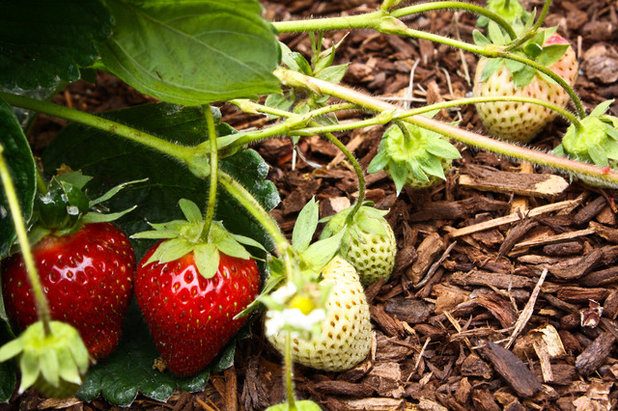
Sage Ecological Landscapes and Nursery
Varieties: June-bearing strawberries are the most familiar. These varieties produce large fruits over a two- to three-week period in June to early July. These are fairly aggressive plants, spreading out runners readily.
Everbearing varieties are smaller and tidier while still producing two or three crops over the season. Rapidly gaining in home garden popularity are the
day-neutral types, also smaller and less aggressive, with the bonus of producing berries from spring through fall.
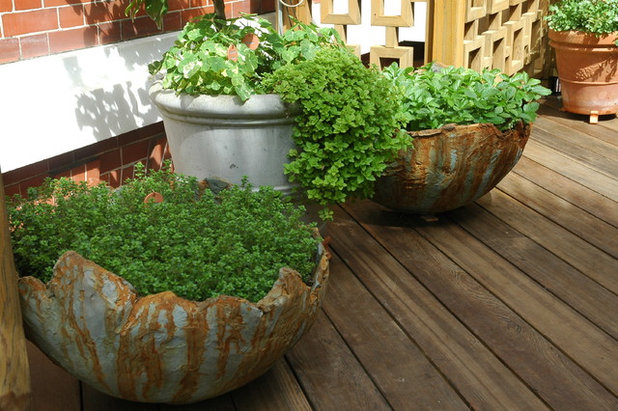
Kate Michels Landscape Design
If you want to try something more exotic, consider
alpine strawberries and
musk strawberries. The small, highly ornamental alpine varieties are easily grown from seed and produce their tiny fruits all summer long, though as their name suggests, they don’t handle heat well. Musk strawberries, which produce a spring crop only, have a very intense flavor that may take some getting used to. They do best if there is a male pollinator.
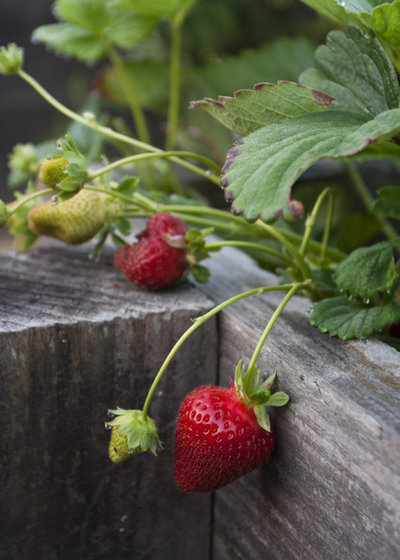
Shades Of Green Landscape Architecture
When to plant: In cold-winter climates, plant when the ground can be worked in early spring about three weeks to one month before the last frost date; plant in winter and early spring or fall in warm-winter climates
Climate: Strawberry varieties can be found for every climate condition, from cold to hot, from dry to damp or humid. Check with your nursery or cooperative extension for the best varieties for your climate, and be sure to buy resistant plants if diseases are a problem in your area.
Light requirement: Full sun or partial shade for Alpine strawberries; full sun or partial shade for musk berries
Water requirement: Regular
Favorites:
- June-bearing: Allstar, Annapolis, Benton, Camarosa, Chandler, Earliglow, Guardian, Honeoye, Hood, Jewel, Puget Reliance, Rainier, Seneca, Sequoia
- Everbearing: Fort Laramie, Ozark Beauty, Quinault
- Day-neutral: Albion, Fern, Seascape, Selva, Tribute, Tristar
- Alpine: Alexandria, Alpine Yellow, Alpine White, Fragola di Bosco, Mignonette
- Musk: Capron, Profumata di Tortona
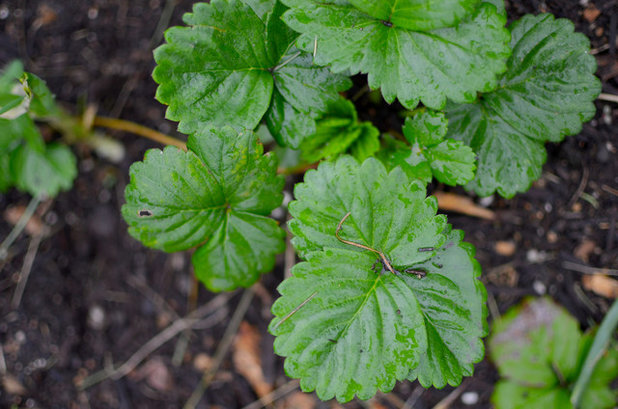
Amy Renea
Planting: However you plan to plant, choose a site with very rich, well-drained (even sandy), slightly acidic to neutral soil. If your soil is alkaline, grow the berries in raised rows or beds, or consider using containers. Work a complete fertilizer into the soil, and if you want, build small hills or mounds to elevate the plants slightly and create watering basins or furrows.
Set the plants in place, spreading out the roots and spacing them about 1 1/2 to 2 feet apart for most berries, 8 to 12 inches apart for alpine strawberries.
Keep the base of each plant’s crown level with or just slightly above the soil; plant too deep and the crown will rot. Cover the roots completely with soil and firm it in place. If heavy frost is expected, protect the crops with row covers.
If you're planting in a container or raised bed, look for one that is at least 8 inches deep. Hanging planters should be at least 12 inches deep.
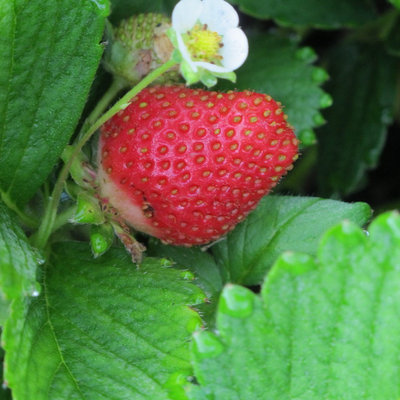
Gardening with Confidence®
Care: If you're growing the plants in rows, lightly cultivate the soil for two to six weeks (two weeks for everbearing and day-neutral types; six weeks for June-bearing) to allow runners to spread. Remove any weeds and stray runners. Keep weeds down with straw or another light-colored mulch during the growing season.
Pinch off the earliest blooms to let the plants concentrate on growth rather than fruit production. Pinch blossoms on June-bearing strawberries for at least the first two weeks they appear; you can even pinch off all blossoms the first year for better production in later years. Pinch off the first everbearing blossoms. Remove the blossoms for the first six weeks for day-neutral varieties. Don’t remove blossoms on alpine strawberries.
Keep the soil consistently most while the fruit is forming, providing about 1 to 2 inches of water per week. Pinch off June-bearing strawberry runners that are spreading out of bounds to ensure fewer but larger berries.
Feed June-bearing, alpine and musk strawberries plants as they begin to grow in spring with a balanced or low-nitrogen fertilizer; feed more heavily after you harvest. Lightly feed everbearing and day-neutral berries throughout the season once the blossoms have set.
Strawberries are subject to a number of pests, including aphids, mites, snails and slugs. Strawberry root weevils can be a problem in some areas. Even more of a problem will be birds. Use netting to keep them, and any household dogs or other creatures, away from the developing fruit. They all love strawberries just as much as humans do.
Diseases such as blight, fruit rot, leaf problems, powdery mildew and verticilium wilt can also cause problems, though if you keep a close watch and remove any diseased plants, you should be able to keep things in check.
If you live in a cold-weather climate, cover the plants with straw mulch by late fall. You can reuse the mulch the following spring if a late frost threatens.
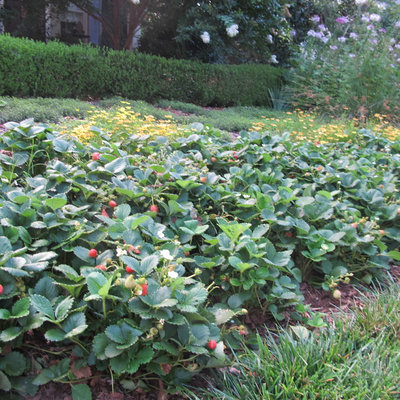
Gardening with Confidence®
Rejuvenation: This is key for June-bearing strawberries.Once the plants have finished fruiting, thin out older, weak or diseased plants, leaving about 6 inches between the remaining strawberries. Mow over the foliage, about 1 to 4 inches above the crown. Spread a layer of soil over the plants and add fertilizer.
For all other strawberries, divide the plants in spring.
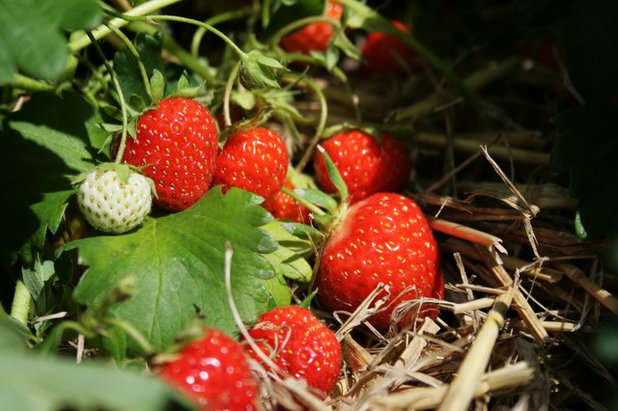
Laara Copley-Smith Garden & Landscape Design
Harvest: When they’re bright red, they’re ready to eat. Home-grown strawberries are fragile. To avoid crushing or bruising the fruit, cut or pinch the stems.
Plant guides: How to grow the top summer crops





